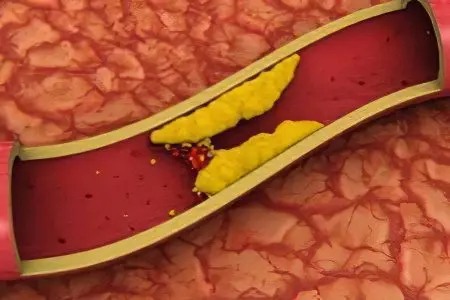Contents
Definition of the disease
Aortic sclerosis a fairly common disease among the elderly, the development of which is based on the defeat of certain sections of the aorta with atherosclerotic plaques (calcium salt deposits). In some cases, the pathological process can cover the aorta throughout its entire length. Symptoms and prognosis of the development of the disease depend on the location and degree of damage to the blood vessel, as well as on the condition of the vascular walls.
Reasons for the development of aortic sclerosis
To a greater extent, the formation of atherosclerotic plaques is promoted by malnutrition – excessive consumption of foods rich in cholesterol and a lack of raw vegetables, berries and fruits in the diet, systematic overeating and excess weight. Another reason for the development of sclerosis is inflammatory diseases, usually of a chronic nature – tuberculosis, syphilis, endocrinological diseases.
Symptoms of aortic sclerosis

It should be noted right away that the aorta is the largest vessel that feeds almost all vital organs of the human body. It consists of two main sections: the thoracic, covering the organs of the chest, head, neck and upper limbs, and the abdominal, nourishes the organs of the abdominal cavity, small pelvis and lower limbs. Symptoms and development of the process, as well as the outcome of the disease, are determined by the degree and prevalence of damage to the walls of the aorta.
Thoracic sclerosis is characterized by an asymptomatic course for a long time, although it is most common among other forms of atherosclerosis. The first manifestations, as a rule, begin at a fairly advanced age of 60-70 years, when the walls of the vessel are already thoroughly destroyed. Patients begin to complain of a burning sensation in the chest, systolic pressure rises significantly, dizziness and difficulty swallowing are noted.
Indirect signs of the development of atherosclerosis of the thoracic aorta can be premature aging and the appearance of gray hair, intense hair growth in the auricles, the appearance of small wen on the face and a light strip along the edge of the iris.
The localization of the disease in the abdominal aorta is noted in about half of the cases, and may also not manifest itself for a long time. As a result, the blood supply to the internal organs is disrupted due to atherosclerosis of the vessel that feeds these organs, which can lead to ischemic lesions. Clinical manifestations are characterized by periodic aching pains in the abdomen after eating, which do not have a pronounced character and pass on their own after 2-3 hours after the onset.
Disturbances in the digestive process can lead to noticeable weight loss.
All of the above symptoms are a direct indication for contacting the clinic. Due to the latent (hidden) course of the disease, serious complications may develop.
Complications of aortic sclerosis
Complications of aortic sclerosis lead to life-threatening conditions. Thrombosis of the vessels of the abdominal cavity, which develops as a result of damage to the abdominal aorta, can lead to the development of extensive inflammation of the abdominal cavity and peritoneum, in other words, to diffuse peritonitis. The patient’s condition deteriorates sharply, unbearable severe pain appears – all this can end in the death of the patient if qualified medical care is not immediately provided.
Among the no less dangerous complications are the development of renal failure and ischemia of the kidney, arterial hypertension and stroke due to blockage of the arteries that feed the heart, aortic aneurysm. But the most terrible complication is death from coronary insufficiency.
Treatment of aortic sclerosis

Generally, there are three treatments for aortic sclerosis.
As a method more aimed at preventing the formation of atherosclerotic plaques, non-drug treatment is recommended – this is the elimination of predisposing factors: lowering blood cholesterol levels through a healthy diet, normalizing weight, giving up bad habits, permissible physical activity and eliminating, if possible, stressful situations .
Drug treatment, as one of the methods, also involves lowering the level of cholesterol in the blood. The doctor prescribes a course of therapy based on the patient’s condition and taking into account the degree and location of the aortic lesion. As a rule, drugs are used that accelerate the digestion of fats and inhibit the synthesis of cholesterol.
The third method of treatment is surgery, it is used mainly already with the development of complications. The resulting plaque is surgically removed, followed by vessel prosthesis.
It is often advisable to conduct complex treatment.









